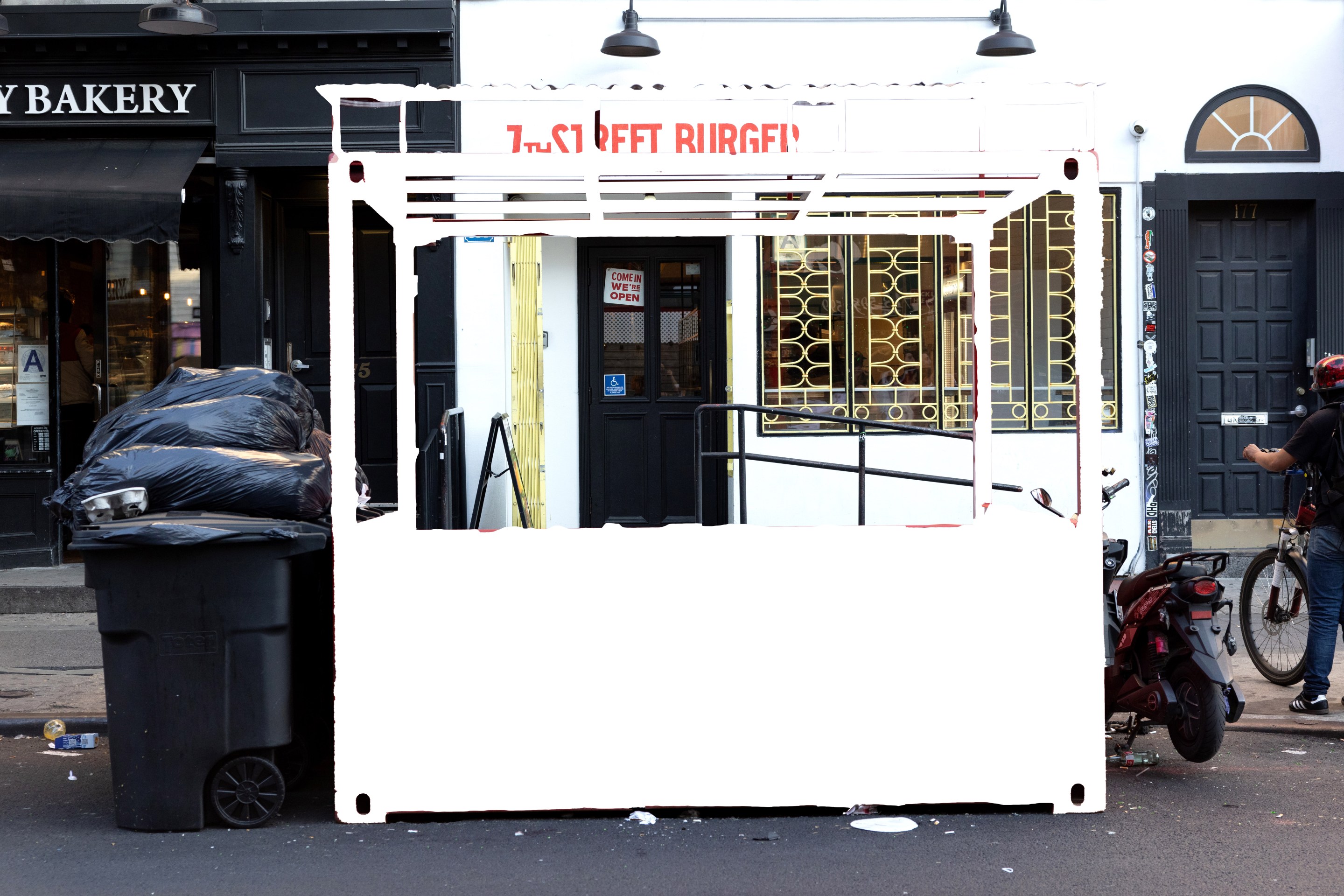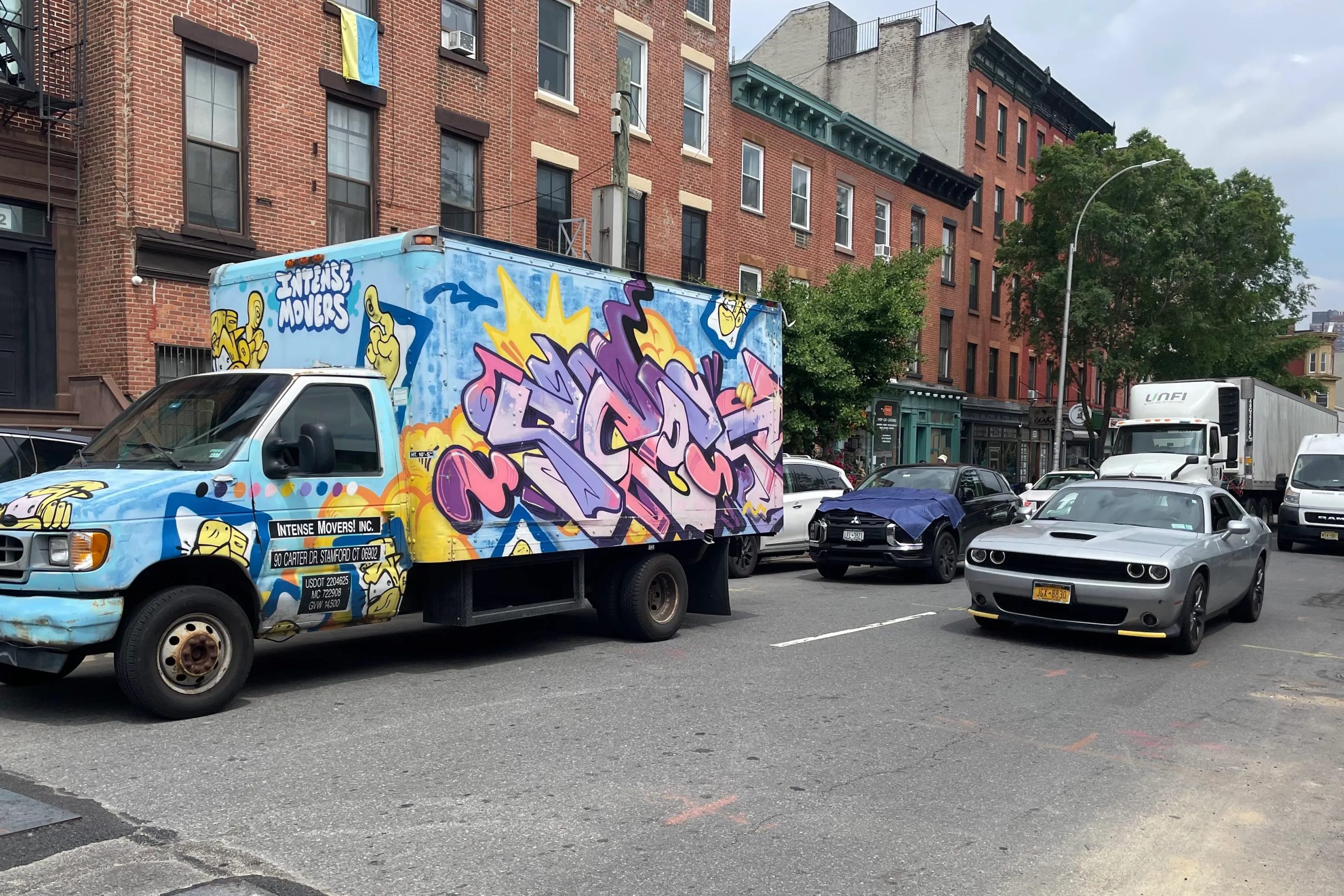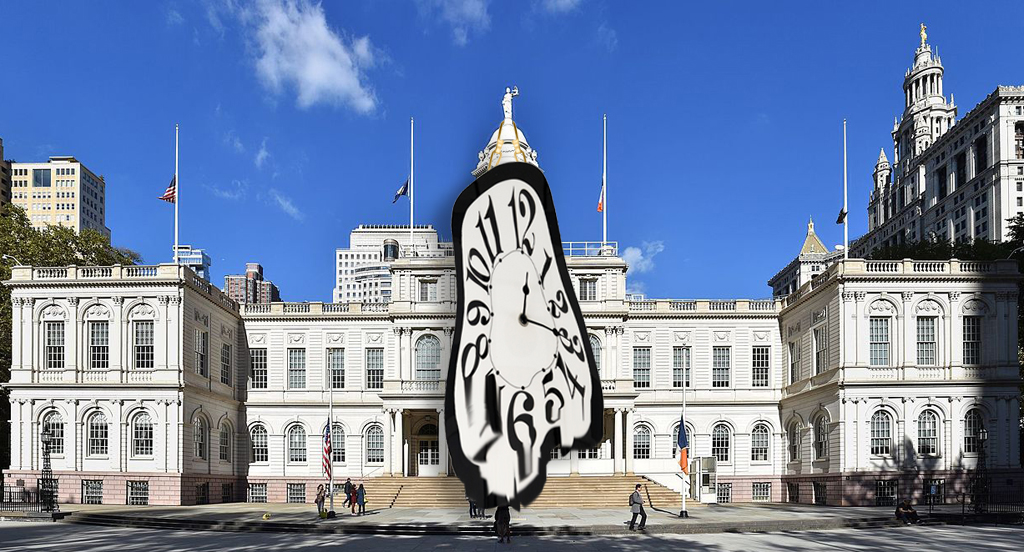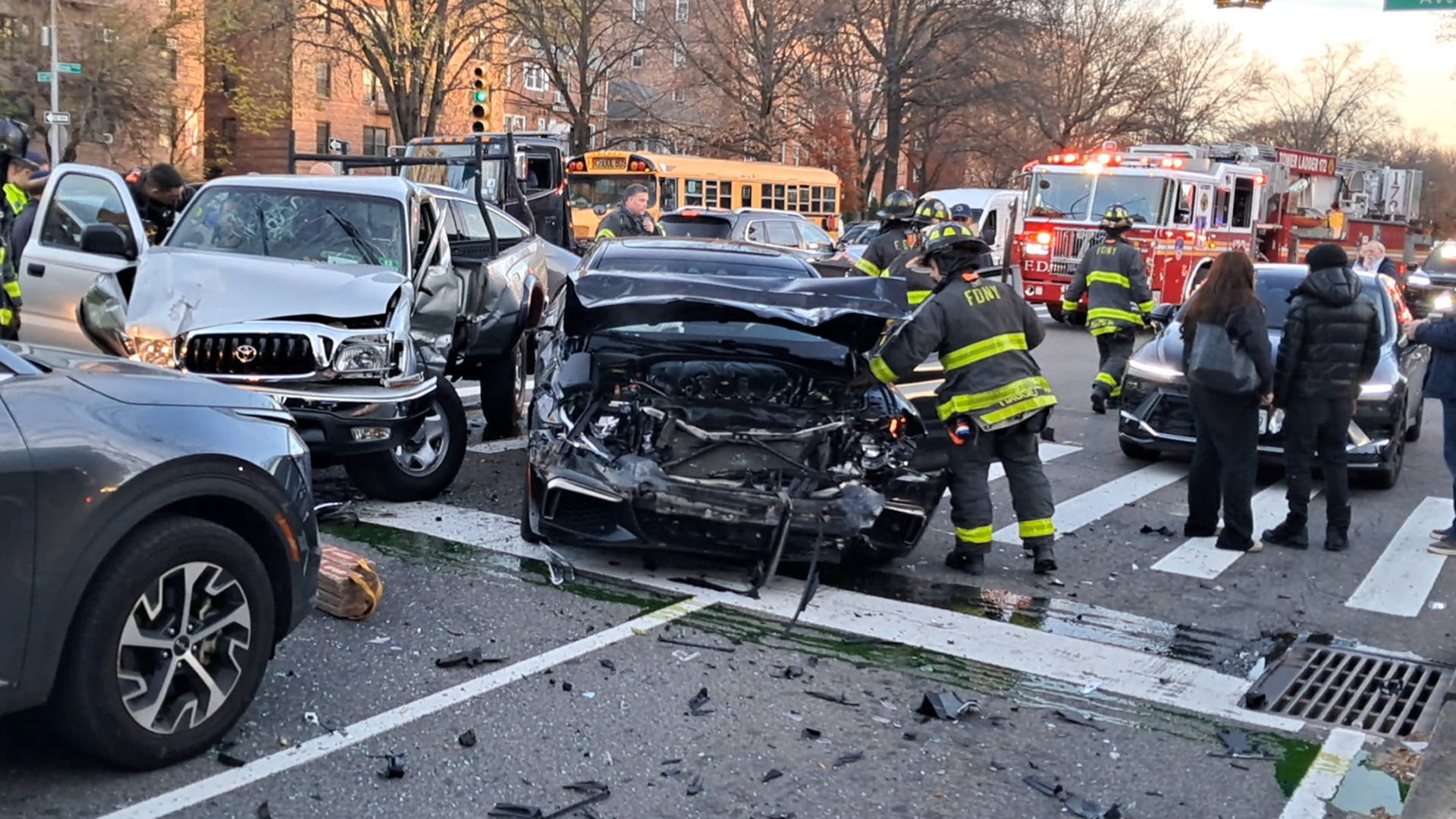DOT's plan to extend the protected bike lanes on Eighth and Ninth Avenues from the low 30s north to 59th Street won unanimous approval from the transportation committee of Community Board 4 last night. With the exception of two blocks of Eighth Avenue in front of the Port Authority, the lanes will be fully protected through the length of Midtown.

The redesign will make cycling a more attractive option to access the city's biggest employment center and the theater district, and it will bring badly needed safety changes to the wide and chaotic west side avenues where they pass by Penn Station, the Port Authority, and the Lincoln Tunnel. Since 2005, eight pedestrians and one motorist were killed in traffic crashes on this stretch of Eighth Avenue, according to DOT; six pedestrians were killed on Ninth. Similar safety improvements caused traffic injuries for all street users to drop by 35 percent on a stretch of Eighth Avenue further downtown.
On each avenue, the space for the protected bike lane and pedestrian refuge islands will come from narrowing the existing travel lanes by two feet each, not removing a travel lane, DOT officials said. With the addition of left-turn space in the form of mixing zones -- where bike traffic and turning cars overlap -- and signalized turn bays at major intersections, traffic capacity will in fact increase on Eighth and Ninth Avenues. "If anything, speed should actually improve," said DOT Borough Commissioner Margaret Forgione.
Construction would occur in two phases. The lanes would be built south of 42nd Street in the spring of next year with the northern sections completed that fall. The full board of CB 4 will meet to vote on the proposal next month.
Unlike the bike lanes on the east side, DOT's plans do not call for the lanes to run without protection for any significant distance. Between 40th and 41st Streets on Eighth Avenue, however, the protected lane will become a buffered lane running to the right of the Port Authority cab stand. The plastic bollards currently in place there will remain to the right of the bike lane, however, providing some protection at that location. On the following block, cyclists would share the second lane from the left with motor vehicles turning left.
The need for this design stems from the double left-turn lanes onto 42nd Street, said DOT bike and pedestrian direct Josh Benson. "If the bike lane was between those two left lanes and the curb," he said, "it would be very difficult to go straight on your bike."
Many cyclists and community board members urged DOT to find some solution that protected cyclists as they passed through those two dangerous blocks. Jay Marcus, the committee co-chair, told DOT that perhaps they should totally reimagine the corner of Eighth and 42nd, "similar to what you did in Times Square." In the committee's resolution, they asked that DOT try to improve the design of those two blocks.
The committee also requested that DOT widen the sidewalks on Eighth Avenue in order to ensure that the bike lanes don't get filled with pedestrians overflowing off the curb. "You'll have all those commuters walking to the Port Authority," worried Lourdes Calderon. Benson said that it was possible that something could be worked out for the areas above 42nd Street, where DOT would have some extra time to develop a plan.
Reactions to the plan from the public were generally positive, but a significant number of west side residents worried that law-breaking cyclists were endangering pedestrians. Many of them cited news reports about the Hunter study of bike-on-pedestrian injuries to make their case. A pair of local business owners, who got some outsized attention in this DNAinfo report, also claimed that the bike lane would make parking and loading impossible at their establishments. The committee accepted DOT's word that the agency would add adequate loading zones and work with the NYPD on increasing law enforcement, and asked for progress reports on those issues.





